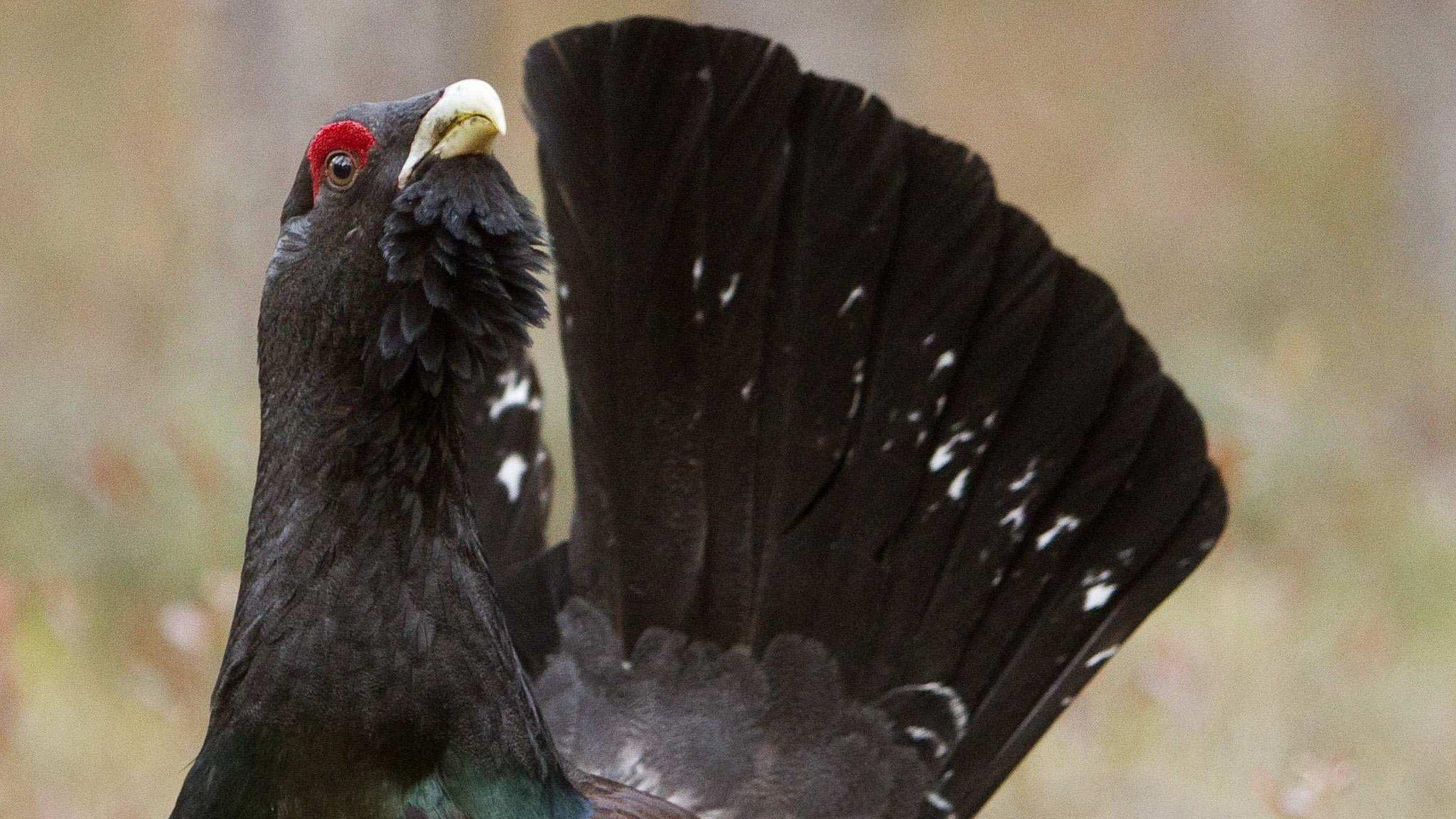Further decline in Scottish capercaillie numbers
- Published
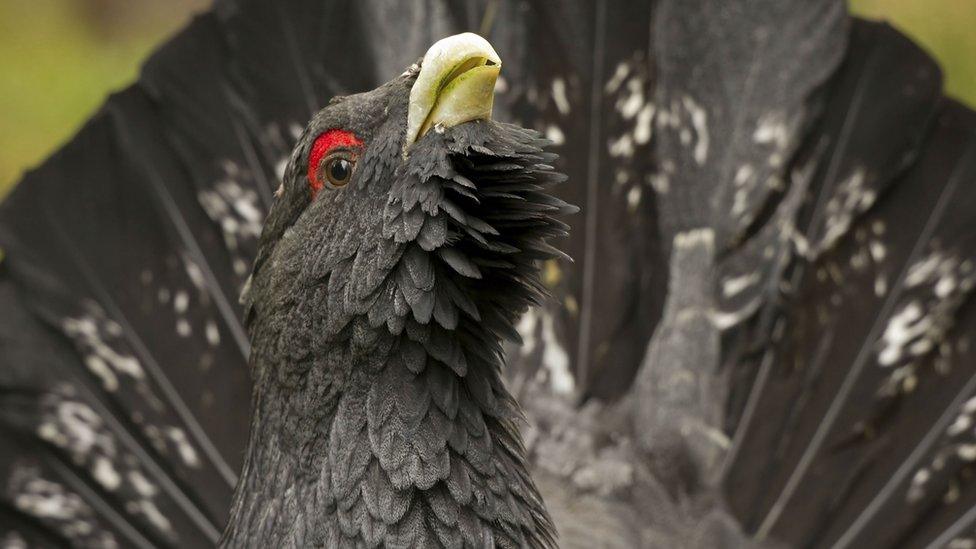
Scotland's capercaillie population continues to decline, according to the results of the latest national survey of the large birds.
It has been estimated there are 1,114 individuals, down from about 1,285 when the last national count was done six years ago.
RSPB Scotland and Scottish Natural Heritage (SNH) said capercaillies were among Scotland's most endangered birds.
Strathspey holds about 83% of the remaining population.
The large grouse are also found in mature pine woodlands in the Cairngorms, Perthshire and Aberdeenshire.
The Cairngorms is a stronghold and numbers have been rising there, but numbers nationally have continued on what has been a long-term fluctuation between 2,000 and 1,000 birds.
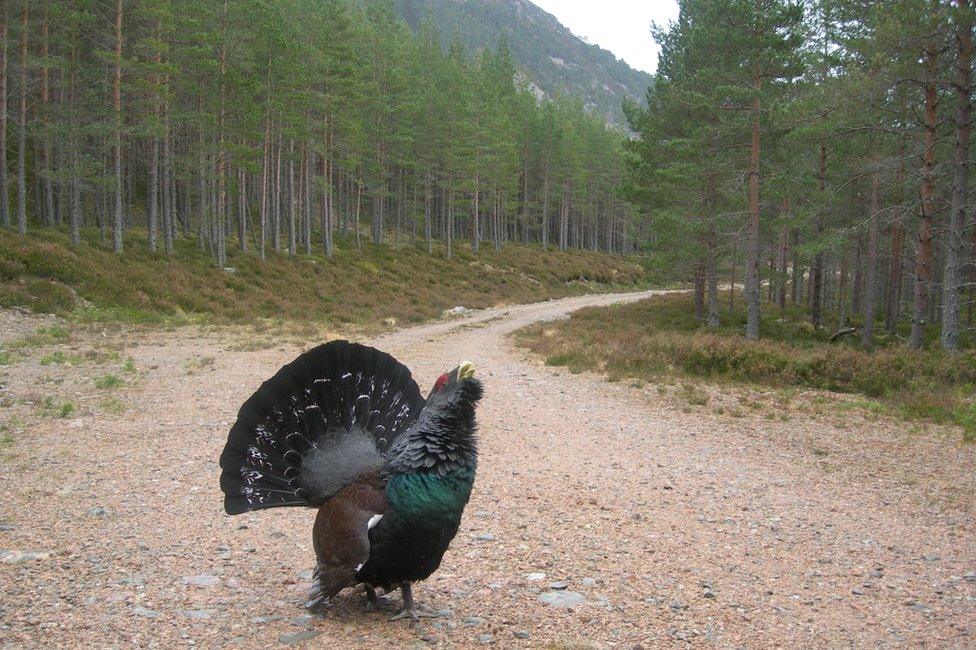
A male capercaillie in forestry in Strathspey
Habitat loss and birds dying after flying into tree fences around forestry plantations have been blamed for the fall in numbers.
RSPB Scotland and SNH said conservation projects had prevented the species from becoming extinct in Scotland.
There is also growing evidence that human disturbance can be an issue as it causes capercaillie to avoid using large areas of otherwise suitable woodland - limiting the potential for population recovery.
Predator control
Nick Wilkinson, conservation scientist for RSPB Scotland, said: "The considerable conservation effort that has been directed at capercaillie for over two decades now has helped to prevent further population decline, and indeed has made a second extinction of this species from Scotland less likely.
"The country's capercaillie population has fluctuated between 1,000 and 2,000 birds since the first national survey in the 1990s, but it's now very much at the low end of this scale.
"Capercaillie are restricted to only a few areas of the country and most are found in Strathspey, which highlights the importance of innovative conservation work in this area, in partnership with others, for their population to recover."
Sue Haysom, policy and advice officer with Scottish Natural Heritage, said: "Vital conservation work such as establishing rich feeding areas for adults and chicks, promoting woodland creation in the right locations to increase habitat, and carrying out targeted predator control around breeding sites has already brought benefits.
"Now we need to build on this with energy and innovative approaches developed by experts and local communities to ensure that future generations can experience this magnificent bird."
- Published8 July 2016
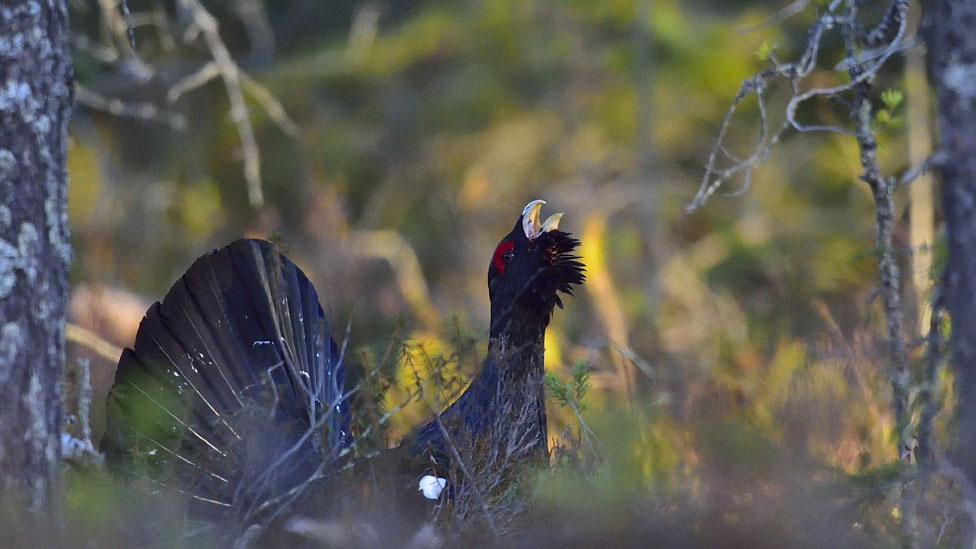
- Published21 April 2015
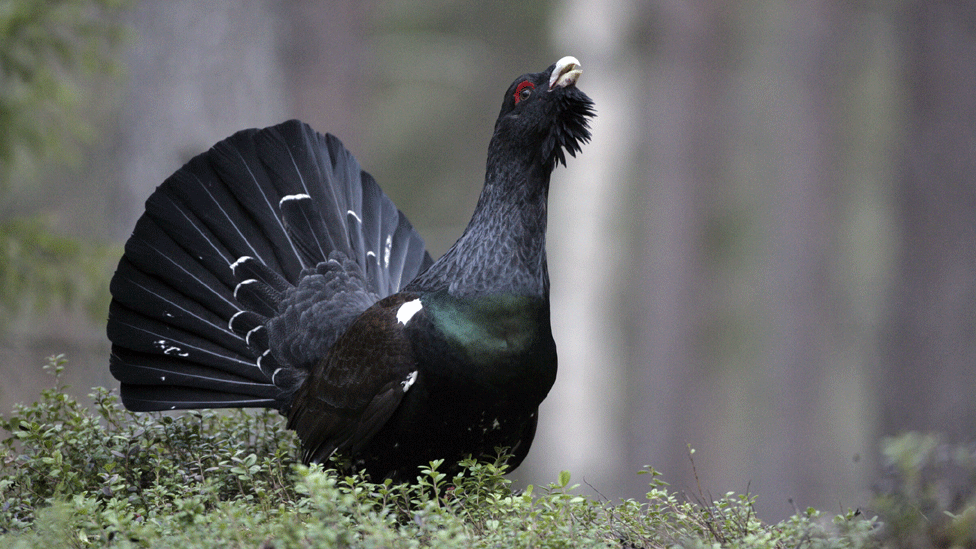
- Published30 September 2013
